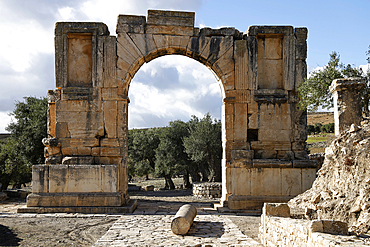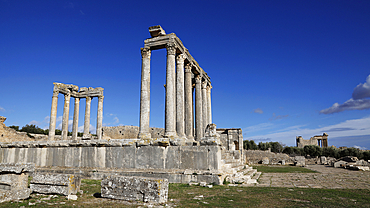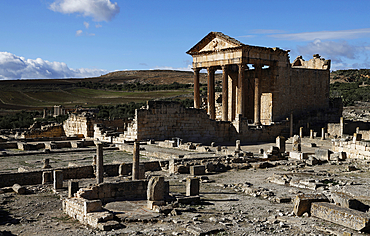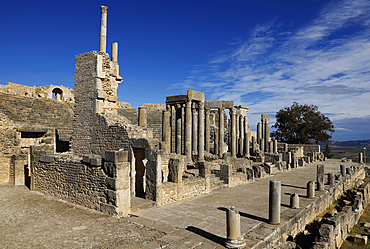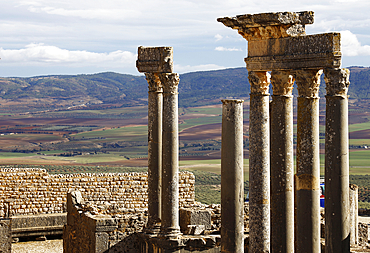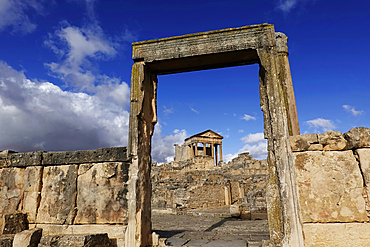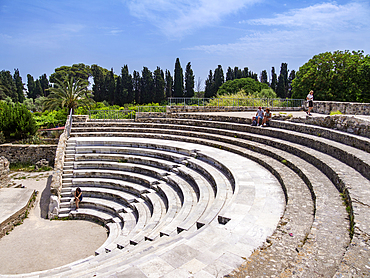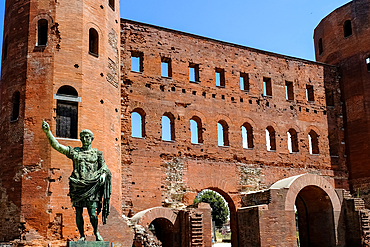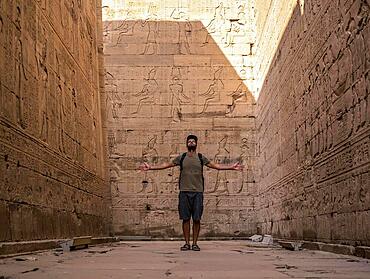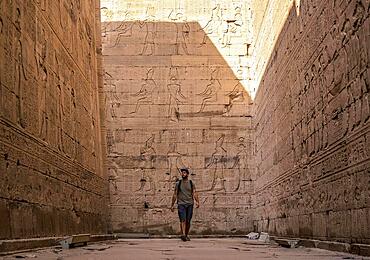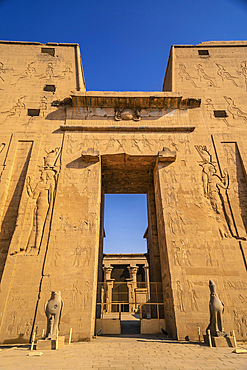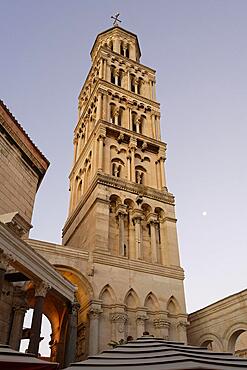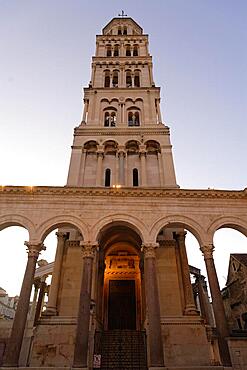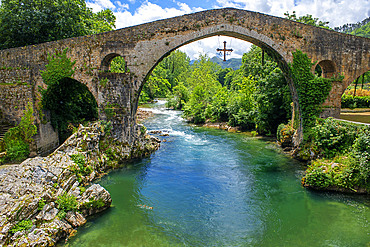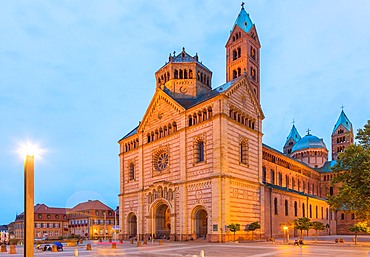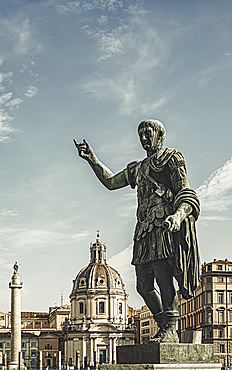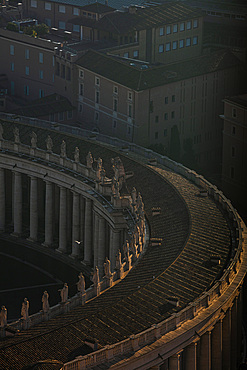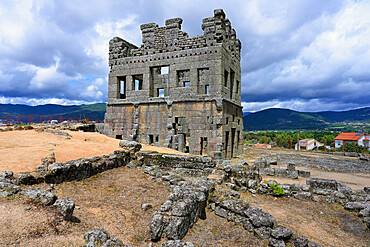Recent searches
Loading...
802-778 - The ruins of the Roman town of Dougga, a UNESCO World Heritage site, valley of Oued Khalled, northwest Tunisia
802-776 - The ruins of the Roman town of Dougga, a UNESCO World Heritage site, valley of Oued Khalled, northwest Tunisia
802-777 - The ruins of the Roman town of Dougga, a UNESCO World Heritage site, valley of Oued Khalled, northwest Tunisia
802-775 - The ruins of the Roman town of Dougga, a UNESCO World Heritage site, valley of Oued Khalled, northwest Tunisia
802-774 - The ruins of the Roman town of Dougga, a UNESCO World Heritage site, valley of Oued Khalled, northwest Tunisia
802-773 - The ruins of the Roman town of Dougga, a UNESCO World Heritage site, valley of Oued Khalled, northwest Tunisia
802-772 - The ruins of the Roman town of Dougga, a UNESCO World Heritage site, valley of Oued Khalled, northwest Tunisia
802-771 - The ruins of the Roman town of Dougga, a UNESCO World Heritage site, valley of Oued Khalled, northwest Tunisia
802-748 - The ruins of the Roman town of Dougga, a UNESCO World Heritage site, valley of Oued Khalled, northwest Tunisia
1245-3121 - Roman Odeon, Western Archaeological Zone, Kos Town, Kos Island, Dodecanese, Greek Islands, Greece, Europe
1373-119 - Statue of Julius Caesar located at the Palatine Gate, a Roman-era city gate, the Porta Principalis Dextra of the ancient town giving entry through the Julia Augusta Taurinorum walls from the North side, Turin, Piedmont, Italy, Europe
1373-117 - Statue of Julius Caesar located at the Palatine Gate, a Roman-era city gate, the Porta Principalis Dextra of the ancient town giving entry through the Julia Augusta Taurinorum walls from the North side, Turin, Piedmont, Italy, Europe
1373-101 - The Palatine Gate (Porta Palatina), a Roman-era city gate, the Porta Principalis Dextra (Right-Side Main Gate) of the ancient town, giving entry through the Julia Augusta Taurinorum walls from the North side, Turin, Piedmont, Italy, Europe
1373-99 - The Palatine Gate (Porta Palatina), a Roman-era city gate, the Porta Principalis Dextra (Right-Side Main Gate) of the ancient town, giving entry through the Julia Augusta Taurinorum walls from the North side, Turin, Piedmont, Italy, Europe
801-3530 - Roman inscription, Forum Square, Old Town, Pula, Croatia, Europe
832-404280 - A young tourist entering the Temple of Edfu in the city of Edfu, Egypt. On the bank of the Nile river, geco-Roman construction, temple dedicated to Huros
832-402761 - Aerial view, evening light, Roman aqueduct, Old Town, Kavala, Dimos Kavalas, Eastern Macedonia and Thrace, Gulf of Thasos, Gulf of Kavala, Thracian Sea, Greece, Europe
832-402159 - Portrait of a young man with a blue turban at the entrance to the Edfu Temple near the city of Aswan. Egypt, west bank of the nile in the city of Edfu, Greco-Roman construction, dedicated to Horus
832-402158 - Portrait of a young man with a blue turban at the entrance to the Edfu Temple near the city of Aswan. Egypt, west bank of the nile in the city of Edfu, Greco-Roman construction, dedicated to Horus
832-402157 - Hieroglyphic corridors of the Temple of Edfu in the city of Edfu, Egypt. On the bank of the Nile river, geco-Roman construction, temple dedicated to Huros
832-402156 - A young tourist visiting the beautiful temple of Edfu in the city of Edfu, Egypt. On the bank of the Nile river, geco-Roman construction, temple dedicated to Huros
832-402154 - A young tourist visiting the beautiful temple of Edfu in the city of Edfu, Egypt. On the bank of the Nile river, geco-Roman construction, temple dedicated to Huros
832-402155 - A young tourist visiting the beautiful temple of Edfu in the city of Edfu, Egypt. On the bank of the Nile river, geco-Roman construction, temple dedicated to Huros
832-402153 - Hieroglyphic corridors of the Temple of Edfu in the city of Edfu, Egypt. On the bank of the Nile river, geco-Roman construction, temple dedicated to Huros
832-402151 - Interior of the Temple of Edfu in the city of Edfu, Egypt. On the bank of the Nile river, geco-Roman construction, temple dedicated to Huros
832-402152 - Interior of the Temple of Edfu in the city of Edfu, Egypt. On the bank of the Nile river, geco-Roman construction, temple dedicated to Huros
832-402150 - Facade with drawing of pharaohs of the Temple of Edfu in the city of Edfu, Egypt. On the bank of the Nile river, geco-Roman construction, temple dedicated to Huros
832-402149 - A young tourist entering the Temple of Edfu in the city of Edfu, Egypt. On the bank of the Nile river, geco-Roman construction, temple dedicated to Huros
832-402148 - A young tourist entering the Temple of Edfu in the city of Edfu, Egypt. On the bank of the Nile river, geco-Roman construction, temple dedicated to Huros
832-402147 - A young tourist entering the Temple of Edfu in the city of Edfu, Egypt. On the bank of the Nile river, geco-Roman construction, temple dedicated to Huros
832-402146 - Facade with drawing of pharaohs of the Temple of Edfu in the city of Edfu, Egypt. On the bank of the Nile river, geco-Roman construction, temple dedicated to Huros
844-30020 - View of Roman Thermal Baths, Kos Town, Kos, Dodecanese, Greek Islands, Greece, Europe
844-30017 - View of Roman Odeon of Kos, Kos Town, Kos, Dodecanese, Greek Islands, Greece, Europe
844-30016 - View of Roman Odeon of Kos, Kos Town, Kos, Dodecanese, Greek Islands, Greece, Europe
844-30013 - View of Roman Odeon of Kos, Kos Town, Kos, Dodecanese, Greek Islands, Greece, Europe
832-400772 - Diocletian's Palace, Sveti Duje Cathedral, Tower, Roman Catholic Archidiocese of Split-Makarska, Split, Splitsko-Dalmatinska, Croatia, Europe
832-400769 - Diocletian's Palace, Sveti Duje Cathedral, Tower, Roman Catholic Archidiocese of Split-Makarska, Split, Splitsko-Dalmatinska, Croatia, Europe
832-400663 - Aerial View of Pier and Beach with Sea Vacation in California San Clemente, USA, North America
1184-8377 - Town view from the Roman bridge, Salamanca, UNESCO World Heritage Site, Castile and Leon, Spain, Europe
1184-8342 - View from the Roman wall of Lugo and its Cathedral, UNESCO World Heritage Site, Lugo, Galicia, Spain, Europe
1184-8341 - Aerial of the Roman walled town of Lugo, UNESCO World Heritage Site, Galicia, Spain, Europe
1184-8340 - The Roman walled town of Lugo, UNESCO World Heritage Site, Galicia, Spain, Europe
1184-8339 - The Roman walled town of Lugo, UNESCO World Heritage Site, Galicia, Spain, Europe
1184-8338 - View from the Roman wall of Lugo and its Cathedral, UNESCO World Heritage Site, Lugo, Galicia, Spain, Europe
1184-8337 - View from the Roman wall of Lugo and its Cathedral, UNESCO World Heritage Site, Lugo, Galicia, Spain, Europe
1184-8336 - View from the Roman wall of Lugo and its Cathedral, UNESCO World Heritage Site, Lugo, Galicia, Spain, Europe
845-1124 - Roman Column and York Minster in Minster Yard, York, Yorkshire, England, Unted Kingdom, Europe
1350-6665 - The hump-backed "Roman Bridge" on the Sella River. Cangas de Onis, Asturias, Spain
1361-54 - Colourful houses of Ventotene and the Roman port in sunshine, Pontine Islands, Tyrrhenian Sea, Latina province, Latzio, Italy, Europe
306-4504 - Roman Amphitheatre, Tarragona, Catalonia, Spain, Europe
1184-7543 - Aerial of the Roman Amphitheatre, Tarraco (Tarragona), UNESCO World Heritage Site, Catalonia, Spain, Europe
1184-7545 - Roman Amphitheatre at night, Tarraco (Tarragona), UNESCO World Heritage Site, Catalonia, Spain, Europe
1231-22 - Roman ruins in the centre of Bari old town surrounded by residential homes, Bari, Apulia, Italy, Europe
1113-107691 - Speyer, Cathedral Church of St, Maria and St, Stephen, west facade, Domplatz
1113-107760 - Statue of emperor Nerva Marcus Cocceius Nerva was a Roman emperor from 96 to 98.
1113-107729 - Rome, Roman Forum, House of the Vestals, Statue of a Vestal Virgin
1113-107761 - Nuns in front of the Facade at Basilica di San Giovanni in Laterano Rome Italy
746-92482 - Old Town, Piazza G.Matteotti square, Roman tanks, Amelia, Umbria, Italy, Europe
746-92165 - Colosseo, Colosseum, UNESCO World Heritage Site, Rome, Lazio, Italy, Europe
1278-270 - Drone view of Navarinou square with Roman ruins of the Palace of Galerius, Thessaloniki, Greece, Europe
1278-269 - Drone view of Trigonion Chain defensive Tower and fortifications at upper town of Ano Poli in Thessaloniki, Greece, Europe
746-90158 - High view of Rome from Saint Peter Chapel, Lazio, Italy, Europe
746-90159 - Saint Peter's Square with Christmas Tree, Rome, Lazio, Italy, Europe
832-393800 - Centum Cellas, Roman villa, 1st century AD, Mount of Santo Antao village, Belmonte, Castelo Branco district, Beira, Portugal, Europe
1131-1659 - Centum Cellas, Roman villa, 1st century AD, Mount of Santo Antao village, Belmonte, Castelo Branco district, Beira, Portugal, Europe
1113-106325 - Aerial view from the Roman amphitheater Pula Arena, Pula, Istria, Croatia, Europe
1350-2688 - Verges, a small town in the Northeast of Catalonia (Spain), during Easter celebrates the Procession of Verges with skeletons dancing on the sound of a drum, Roman soldiers, known as the 'Manages', and a representation of the life and crucifixion of Jesus Christ. The Procession features the Dance of Death, a tradition from the Middle Age associated with epidemics and plagues and the only one remaining in Spain Ten skeletons dance to the beat of a drum to remember that no one is exempt of death. The backdrop of the medieval walls and towers of Verges is key to this macabre staging.
1350-2693 - Verges, a small town in the Northeast of Catalonia (Spain), during Easter celebrates the Procession of Verges with skeletons dancing on the sound of a drum, Roman soldiers, known as the 'Manages', and a representation of the life and crucifixion of Jesus Christ. The Procession features the Dance of Death, a tradition from the Middle Age associated with epidemics and plagues and the only one remaining in Spain Ten skeletons dance to the beat of a drum to remember that no one is exempt of death. The backdrop of the medieval walls and towers of Verges is key to this macabre staging.
1350-2692 - Verges, a small town in the Northeast of Catalonia (Spain), during Easter celebrates the Procession of Verges with skeletons dancing on the sound of a drum, Roman soldiers, known as the 'Manages', and a representation of the life and crucifixion of Jesus Christ. The Procession features the Dance of Death, a tradition from the Middle Age associated with epidemics and plagues and the only one remaining in Spain Ten skeletons dance to the beat of a drum to remember that no one is exempt of death. The backdrop of the medieval walls and towers of Verges is key to this macabre staging.
1350-2695 - Verges, a small town in the Northeast of Catalonia (Spain), during Easter celebrates the Procession of Verges with skeletons dancing on the sound of a drum, Roman soldiers, known as the 'Manages', and a representation of the life and crucifixion of Jesus Christ. The Procession features the Dance of Death, a tradition from the Middle Age associated with epidemics and plagues and the only one remaining in Spain Ten skeletons dance to the beat of a drum to remember that no one is exempt of death. The backdrop of the medieval walls and towers of Verges is key to this macabre staging.
1350-2690 - Verges, a small town in the Northeast of Catalonia (Spain), during Easter celebrates the Procession of Verges with skeletons dancing on the sound of a drum, Roman soldiers, known as the 'Manages', and a representation of the life and crucifixion of Jesus Christ. The Procession features the Dance of Death, a tradition from the Middle Age associated with epidemics and plagues and the only one remaining in Spain Ten skeletons dance to the beat of a drum to remember that no one is exempt of death. The backdrop of the medieval walls and towers of Verges is key to this macabre staging.
1350-2691 - Verges, a small town in the Northeast of Catalonia (Spain), during Easter celebrates the Procession of Verges with skeletons dancing on the sound of a drum, Roman soldiers, known as the 'Manages', and a representation of the life and crucifixion of Jesus Christ. The Procession features the Dance of Death, a tradition from the Middle Age associated with epidemics and plagues and the only one remaining in Spain Ten skeletons dance to the beat of a drum to remember that no one is exempt of death. The backdrop of the medieval walls and towers of Verges is key to this macabre staging.
1350-2687 - Verges, a small town in the Northeast of Catalonia (Spain), during Easter celebrates the Procession of Verges with skeletons dancing on the sound of a drum, Roman soldiers, known as the 'Manages', and a representation of the life and crucifixion of Jesus Christ. The Procession features the Dance of Death, a tradition from the Middle Age associated with epidemics and plagues and the only one remaining in Spain Ten skeletons dance to the beat of a drum to remember that no one is exempt of death. The backdrop of the medieval walls and towers of Verges is key to this macabre staging.
1350-2689 - Verges, a small town in the Northeast of Catalonia (Spain), during Easter celebrates the Procession of Verges with skeletons dancing on the sound of a drum, Roman soldiers, known as the 'Manages', and a representation of the life and crucifixion of Jesus Christ. The Procession features the Dance of Death, a tradition from the Middle Age associated with epidemics and plagues and the only one remaining in Spain Ten skeletons dance to the beat of a drum to remember that no one is exempt of death. The backdrop of the medieval walls and towers of Verges is key to this macabre staging.
1350-2696 - Verges, a small town in the Northeast of Catalonia (Spain), during Easter celebrates the Procession of Verges with skeletons dancing on the sound of a drum, Roman soldiers, known as the 'Manages', and a representation of the life and crucifixion of Jesus Christ. The Procession features the Dance of Death, a tradition from the Middle Age associated with epidemics and plagues and the only one remaining in Spain Ten skeletons dance to the beat of a drum to remember that no one is exempt of death. The backdrop of the medieval walls and towers of Verges is key to this macabre staging.
1350-2697 - Verges, a small town in the Northeast of Catalonia (Spain), during Easter celebrates the Procession of Verges with skeletons dancing on the sound of a drum, Roman soldiers, known as the 'Manages', and a representation of the life and crucifixion of Jesus Christ. The Procession features the Dance of Death, a tradition from the Middle Age associated with epidemics and plagues and the only one remaining in Spain Ten skeletons dance to the beat of a drum to remember that no one is exempt of death. The backdrop of the medieval walls and towers of Verges is key to this macabre staging.
1350-2694 - Verges, a small town in the Northeast of Catalonia (Spain), during Easter celebrates the Procession of Verges with skeletons dancing on the sound of a drum, Roman soldiers, known as the 'Manages', and a representation of the life and crucifixion of Jesus Christ. The Procession features the Dance of Death, a tradition from the Middle Age associated with epidemics and plagues and the only one remaining in Spain Ten skeletons dance to the beat of a drum to remember that no one is exempt of death. The backdrop of the medieval walls and towers of Verges is key to this macabre staging.
1351-12 - Whole cityscape of Spoleto, with the Roman aqueduct, the fortress and the old town, Spoleto, Umbria, Italy, Europe
1351-9 - The Roman aqueduct of Perugia at sunset, one of the main attractions of the old town, Perugia, Umbria, Italy, Europe
1350-1178 - Entrance, Temple of Bacchus, Baalbeck, Bekaa Valley, Lebanon
1350-1179 - Roman colonnade on the top, general view of Archaeological site, Byblos, Lebanon
1350-1181 - Al-Mina archaeological site, Tyre (Sour), Lebanon.
1350-790 - Roman Cardo Maximus, in Roman Forum, Downtown, Beirut, Lebanon
1350-1177 - Temple of Bacchus, Baalbeck, Bekaa Valley, Lebanon
846-1290 - View over the city with Ponte Pietra and River Adige at dawn, Verona, UNESCO World Heritage Site, Veneto, Italy, Europe
846-1052 - View over ruined Roman town to the lighthouse, The Agora, Archaeological Park, Paphos, UNESCO World Heritage Site, Cyprus, Europe
1113-103130 - Open-air opera performance of Nabbuco in the evening in the Verona Arena, Verona, Veneto, Italy
832-384905 - City view with roman bridge over Gilao river in old fishermen's town in the evening light, Tavira, drone shot, Algarve, Portugal, Europe
832-384904 - City view with roman bridge over Gilao river in old fishermen's town, Tavira, drone shot, Algarve, Portugal, Europe
832-384908 - City view with roman bridge over Gilao river in old fishermen's town in the evening light, Tavira, drone shot, Algarve, Portugal, Europe
832-384907 - City view with roman bridge over Gilao river in old fishermen's town in the evening light, Tavira, drone shot, Algarve, Portugal, Europe
832-384906 - City view with roman bridge over Gilao river in old fishermen's town in the evening light, Tavira, drone shot, Algarve, Portugal, Europe
746-88644 - Tempio Civico della Beata Vergine Incoronata church, Historical center, Lodi, Lombardy, Italy, Europe
746-88637 - Historical center, Piazza della Vittoria square and Cathedral Duomo di Lodi, Basilica Cattedrale della Vergine Assunta, Lodi, Lombardy, Italy, Europe
746-88645 - Tempio Civico della Beata Vergine Incoronata church, Historical center, Lodi, Lombardy, Italy, Europe
746-88639 - Tempio Civico della Beata Vergine Incoronata church, Historical center, Lodi, Lombardy, Italy, Europe
746-88646 - Tempio Civico della Beata Vergine Incoronata church, Historical center, Lodi, Lombardy, Italy, Europe
746-88638 - Tempio Civico della Beata Vergine Incoronata church, Historical center, Lodi, Lombardy, Italy, Europe

